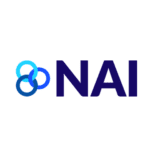Why track KPIs in the government sector?
Key Performance Indicators (KPIs) in the government and public sector play a vital role in enhancing the efficiency, accountability, and overall effectiveness of government and public sector operations. By measuring progress in various areas such as service delivery, finances, and citizen engagement, KPIs provide valuable insights that guide decision-making, enable continuous improvement, and ultimately contribute to the well-being of citizens. In an era where data-driven governance is paramount, KPIs serve as the compass guiding the ship of public administration toward success.
In today’s fast-paced world, effective governance and service delivery are essential for the well-being and progress of a nation. Governments and public sector organizations are tasked with fulfilling a wide range of responsibilities, from ensuring public safety and healthcare to managing infrastructure and providing education. To measure their effectiveness and drive continuous improvement, these entities rely on Key Performance Indicators (KPIs). KPIs offer valuable insights into the performance of government and public sector initiatives, enabling evidence-based decision-making and enhancing overall efficiency.
Service Delivery
KPIs related to service delivery (the same way it works in the business world!) measure the efficiency, accessibility, and quality of public services. These can include metrics such as response times for emergency services, waiting times in healthcare facilities, and user satisfaction ratings for online government services.
Financial Performance
Financial KPIs assess the fiscal health and management of public funds. Examples include budget adherence, cost per service delivered, revenue generation from permits/licenses, and the ratio of public debt to GDP.
Transparency and Accountability
These KPIs gauge the openness and accountability of government operations. Metrics like the availability of public information, frequency of audits, and the number of whistleblower reports can reflect the commitment to transparency.
Infrastructure and Facilities
KPIs related to infrastructure measure the condition, maintenance, and utilization of public assets. This could encompass metrics like road quality, school facilities’ adequacy, and the availability of public transportation.
Environmental Sustainability
In the modern era, environmental considerations are vital. KPIs related to sustainability could include greenhouse gas emissions reduction targets, waste diversion rates, and the percentage of renewable energy sources in government operations.
Engagement
KPIs focused on citizen engagement reflect the level of public participation and involvement in government processes. Metrics might involve voter turnout, the number of public consultations held, and the reach of government communication efforts.
Benefits of Using KPIs in the Government and Public Sector
Informed Decision-Making
KPIs provide data-driven insights that enable policymakers and administrators to make informed decisions about resource allocation and strategy adjustments.
Accountability
Transparent KPI tracking promotes accountability by allowing citizens to evaluate the government’s performance against its commitments.
Continuous Improvement
Regular monitoring of KPIs facilitates the identification of areas needing improvement, fostering a culture of continuous enhancement in public sector services.
Resource Optimization
KPIs help optimize resource utilization by highlighting areas of inefficiency or overuse, leading to better allocation of budgets and personnel.
Evidence-Based Policy
Data from KPIs support evidence-based policy formulation, ensuring that decisions are grounded in measurable outcomes rather than assumptions.
Challenges and Considerations with Key Performance Indicators (KPIs) in the Government and Public Sector
While KPIs offer numerous benefits, their effective implementation in the government and public sector comes with challenges. These challenges include data quality and availability, selecting relevant KPIs, avoiding unintended consequences due to narrow KPI focus, and striking a balance between quantitative metrics and qualitative aspects of governance.




